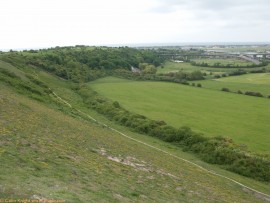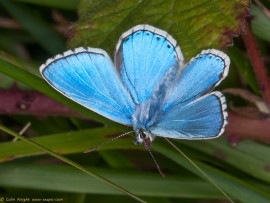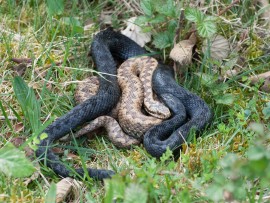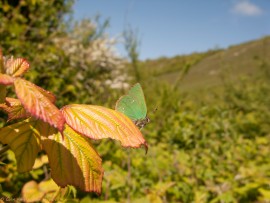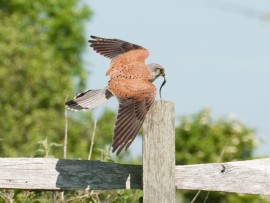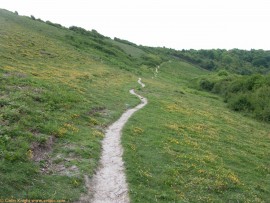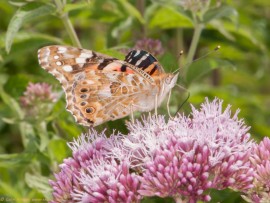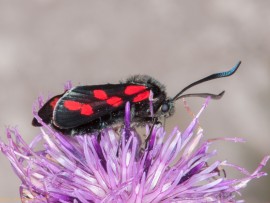Mill Hill - Walking the Line
Originally published in the Autumn 2012 Sussex Newsletter
Forward
Since I wrote this article in 2012 several seasons have passed on Mill Hill and I am nearing the completion of my seventh and last year of Mill Hill transects. I am passing the baton on to another dedicated BC supporter, Helen Corrigan, who lives near the site whereas I currently travel a considerable distance from Littlehampton.
The years 2011 to 2013 were quite challenging for my counts of some species, due to the high numbers of butterflies that fluttered
around me at the bottom of the hill, some species counts exceeding 200 individuals. However 2014 to 2016 were dramatically lower.
For example Adonis Blues first and second broods were as follows:
- 2011: 384, 215 total 599
- 2012: 227, 589 total 816
- 2013: 419, 185 total 604
- 2014: 48, 188 total 236
- 2015: 75, 102 total 177
- 2016: 62, 129 total 191
- Totals 2011 to 2013 = 2019
- Totals 2014 to 2016 = 604
So during the past 6 years the first 3 years accounted for 77% of Adonis counted during the period with just 23% in the last 3 years. What has happened? Weather and habitat are the most likely contributors to the decline. The site is managed with diligent conservation work performed to maintain optimum habitat for the important species on the site, including Adonis Blue, Chalk Hill Blue, Dingy Skipper, Grizzled Skipper and a scarce moth, the Barred Tooth-striped (Trichopteryx polycommata). There is a tendency for the privet to take hold quickly and deprive the food plants of space and light, so this is periodically removed at the foot of the hill.
What is the value of Transect Recording? For an important reserve like Mill Hill it is essential for good data to inform the habitat management plan for the site. My annual transect results are fed back to those responsible for formulating the yearly management plan for the site. By direct observation of vegetation growth and reference to the trends for the prime species, the optimum conservation work can be planned.
There is undoubtedly scope for more transects to be performed in Sussex. The data gained is valuable for the national picture of what is happening to each species. It also gives a view of local trends. I enter my data each week into on-line system managed by Butterfly Conservation which enables me to look at trends and enter records for moths and any other species I wish to record for the transect.
It does not matter whether the site is managed or not, provided there is public access to the area being surveyed. I would urge butterfly enthusiasts to consider if they have a local territory they would consider performing a transect on and then contact Peter Atkinson, BC Sussex Transect Co-ordinator: Patkinson55@tiscali.co.uk.
My transect data for the years 2011 to 2016 can be viewed on a Google drive at http://bit.ly/2vYtYf7.
Colin Knight, August 2017
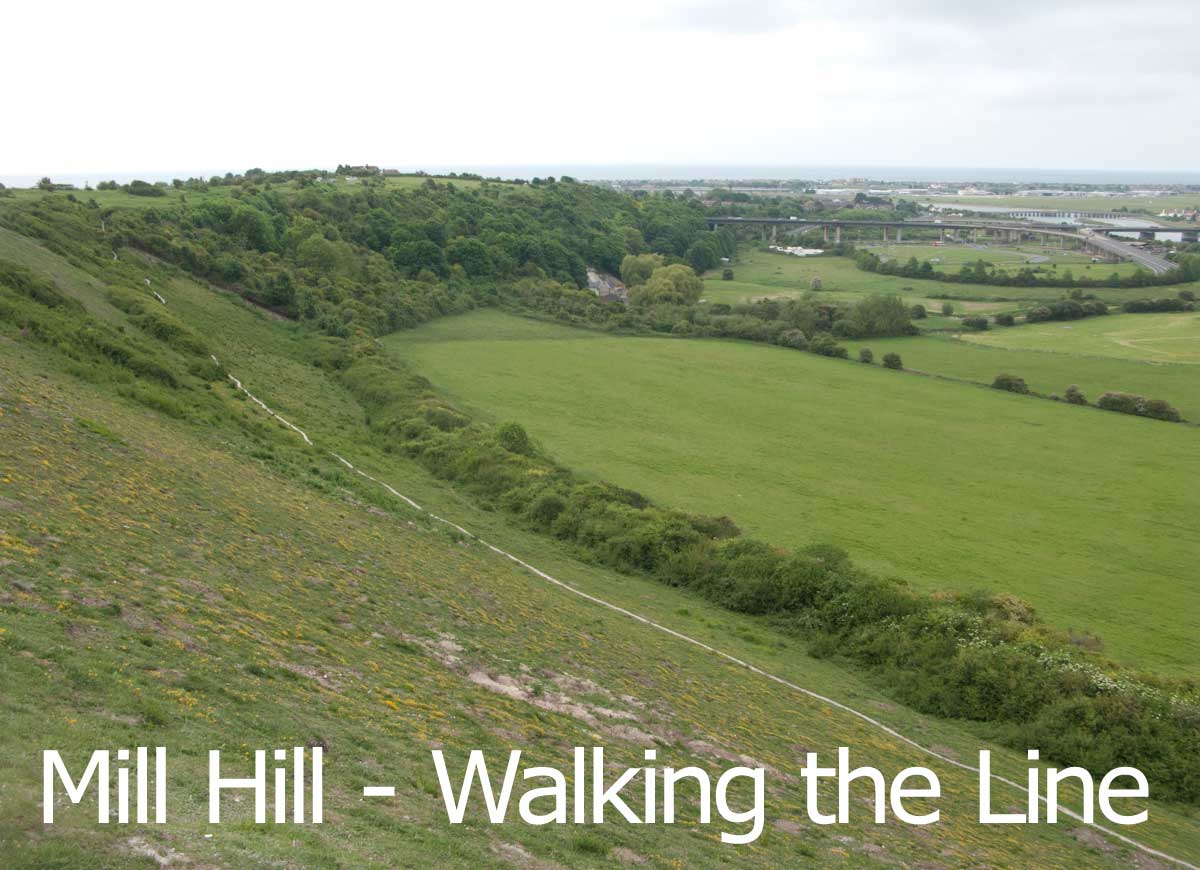
Two years ago Neil Hulme asked for a volunteer to be involved with some local BC work and I put my hand up. I had signed up to do a BC Sussex butterfly transect. This involves 26 weekly visits a year to Mill Hill nature reserve, a well known butterfly hotspot just north of Shoreham.
A transect involves walking a set route divided into stages. Each stage is characterised by similar habitat through its length. My Mill Hill transect has three woodland stages and five grassland stages.
Starting on April 1st each year I visit Mill Hill every week for the next 26 weeks. The survey should be conducted between 10am and 4pm on any day within the week which exceeds 13 degrees Celsius, and preferably one that is dry and sunny, something that has been a challenge recently! I try to complete my survey on the first day that meets these criteria. Walking exactly the same route each week at a steady pace I record every butterfly I see within 2.5 metres either side of the route, 2.5 metres ahead of me or up to 2.5 metres overhead. I use a printed spreadsheet listing all the species that may occur with a column for each stage. At the end of the walk I record the estimated wind speed, percentage sun, average temperature and start and finish times. The transect takes me about 40 minutes to complete.
Peter Atkinson oversees the BC Sussex transects. He walked the route with me on my first week and arranged to supply me with Transect Walker, the software used by Butterfly Conservation to collate results for all surveys nationally. After 26 weeks I transferred the results to Transect Walker and submitted the results to Peter and BC HQ, together with a description of the habitat for each stage and a map of the transect.
The transect experience has been very interesting and rewarding and is one I can recommend to anyone who has access to a good site that is not currently being worked. I had visited Mill Hill a lot before starting the transect as it is a local butterfly haven for many species. In the days of butterfly collecting it was noted for its huge population of Chalkhill Blues and their aberrants. Today numbers are a fraction of what used to be recorded. This may be in part due to the introduction of myxomatosis which decimated the rabbit population. Rabbits used to graze the hillside, keeping the privet and other intrusive plants from smothering the larval and adult food plants of the butterfly. Today Mill Hill is also known for its Adonis Blues, Dingy Skippers and Grizzled Skippers.
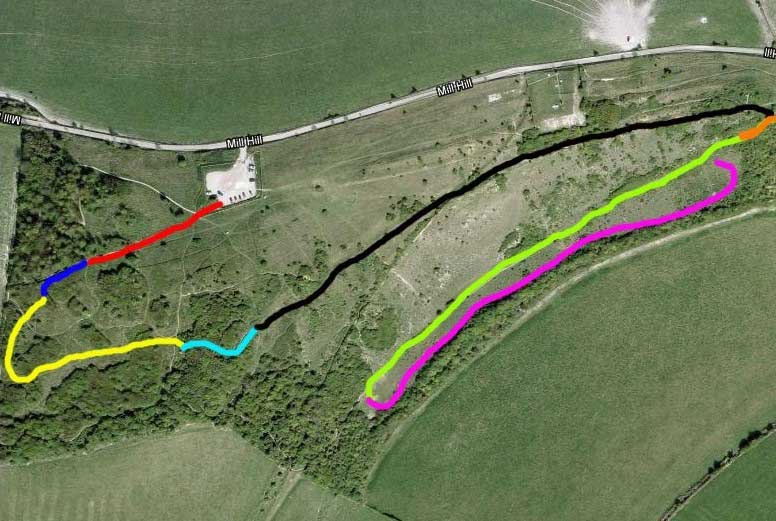
Mill Hill Transect
One of the pleasures of visiting Mill Hill is the wonderful view over the River Adur to the sea. In addition to the butterflies I have also enjoyed seeing the adders at Mill Hill, especially in April before the vegetation has overrun the bottom of the hill and the reptiles are looking for mates. I have seen them courting and mating and witnessed males doing their dominance dance.
It is interesting to see the change in vegetation through the year. As I write this in July the privet has burst into flower all over the hill, giving it a snowy appearance. Conservationists continually wage a battle against this pernicious weed which quickly shades out the important food plants which include Bird’s Foot Trefoil, Horseshoe Vetch and Wood and Field Violets. Eyebright and Horseshoe Vetch give the slopes a lovely pattern of colour at this time.
I recorded the following 26 species in 2011: Large, Grizzled and Dingy Skippers, Holly, Adonis, Common and Chalkhill and Small Blues, Brown Argus, Brimstone, Green Hairstreak, Red Admiral, Peacock, Orange-tip, Gatekeeper, Comma, Meadow Brown, Marbled White, Speckled Wood, Wall, Small Tortoiseshell, Small Heath, Small Copper, Large, Small and Green-veined Whites. I also saw Clouded Yellows in 2010. At the time of writing some 2012 counts are lower than 2011, for example the 2012 Adonis first brood count was 60% of 2011 numbers, though Small Heaths are at the same level.
If you wish to visit the site, there are car parks at TQ21220676 and TQ21160745. These are accessed by taking the A283 to Shoreham from the A27, turn left at the roundabout onto Upper Shoreham Road, turn left onto Erringham Road, then right onto Mill Hill. Be aware that there are some steep parts on the chalky paths which can be slippery in wet weather.



